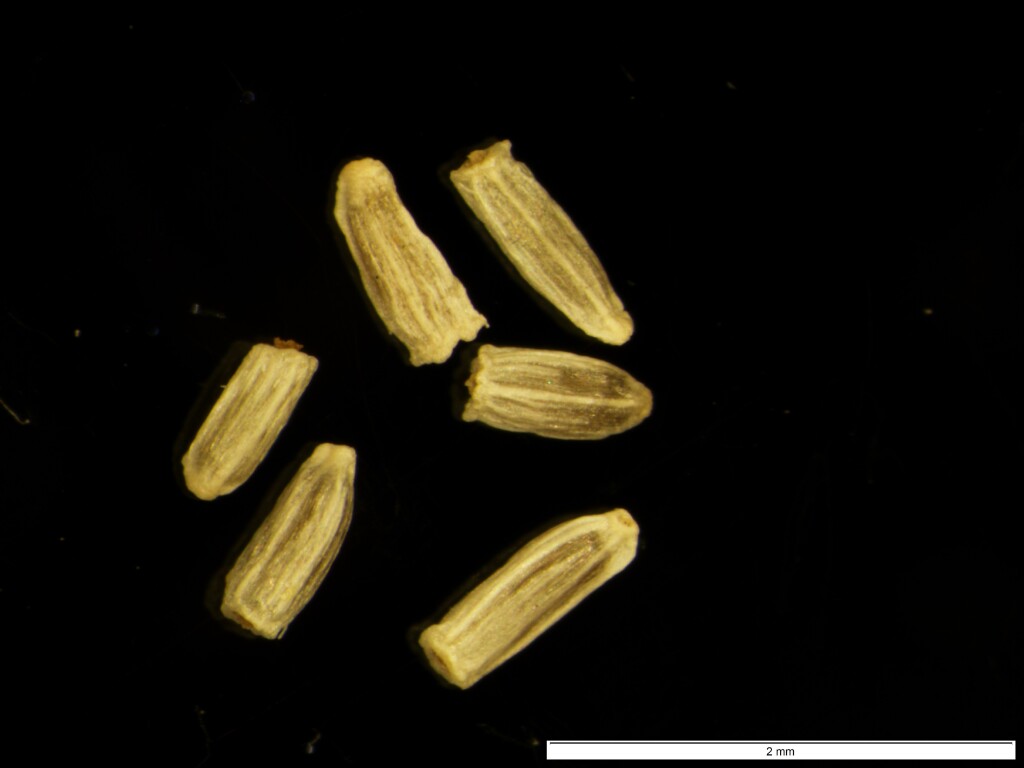Cassinia scabrida
Orchard Rough CassiniaErect shrub to 2 m high; branchlets with dense gland-tipped acicular hairs, occasionally also with cottony hairs on youngest parts. Leaves suberect or spreading, sessile, slightly auriculate and stem clasping at the base, linear, (30–)55–65(–85) mm long, (1–)4–5(–10) mm wide, upper and lower surfaces green with dense short gland-tipped acicular hairs, apex acute with a reflexed mucro, margin revolute when dehydrated. Inflorescences corymbose, 9.5–11.5 cm diam. Capitula hundreds to thousands, pale greenish white and shiny, cylindric, (3.5–)4.2–4.5(–5.0) mm long, c. 1–2 mm wide; involucral bracts 10–15, innermost lanceolate with lamina narrow-triangular, c. 1.5–2 mm long, erect, flat, hyaline, margin entire to erose; receptacle bracts 1–3; florets 4–5. Cypsela cylindric, (0.9–) 1.0–1.2 mm long, glabrous. Pappus usually absent or rarely 1–4 bristles, c. 1.5 mm long. Flowers Nov.–Feb.
NIS, HNF. Endemic to north-east Victoria where known from the Warby Range, Mount Granya, Mount Lawson and Pine Mountain. Locally common understorey shrub in tall and dry Eucalyptus forest of flat areas on granitic inselbergs with sandy or clay soils. Occurs from 180–900 m altitude.
Cassinia scabrida and another similar Victorian species, C. venusta, were once included within a broader C. ozothamnoides (see note under C. ozothamnoides).
Low altitude populations from the Warby Range can exhibit aberrant features for this species, including flowers with 1–4 pappus bristles, rather blunt phyllaries, very short peduncles on lateral capitula in inflorescences and young stems and leaves with some cottony hairs. These features are more typical of C. ozothamnoides, a species that principally occurs on the plains c. 200 m of altitude. It is possible that this area represents an overlap in the altitudinal ranges of the two species which has allowed hybridisation to occur (Orchard 2004a).
Cassinia scabrida and C. venusta co-occur near the summit of Pine Mountain (see note under C. venusta).
 Spinning
SpinningOrchard, A.E. (2004). A reassessment of the genus Haeckeria (Asteraceae: Gnaphalieae), with definition of new species of Cassinia. Australian Systematic Botany 17: 447–467.
